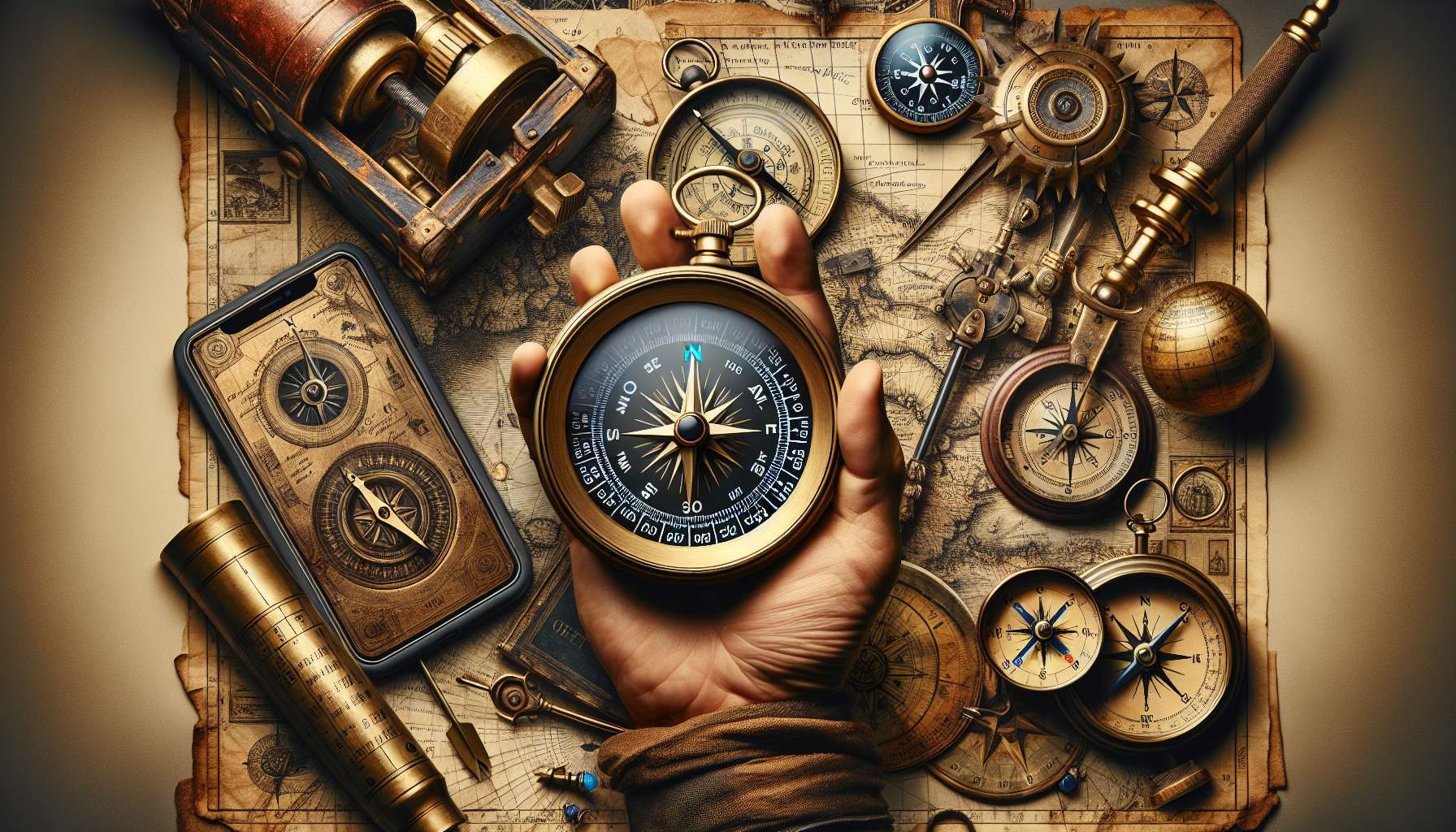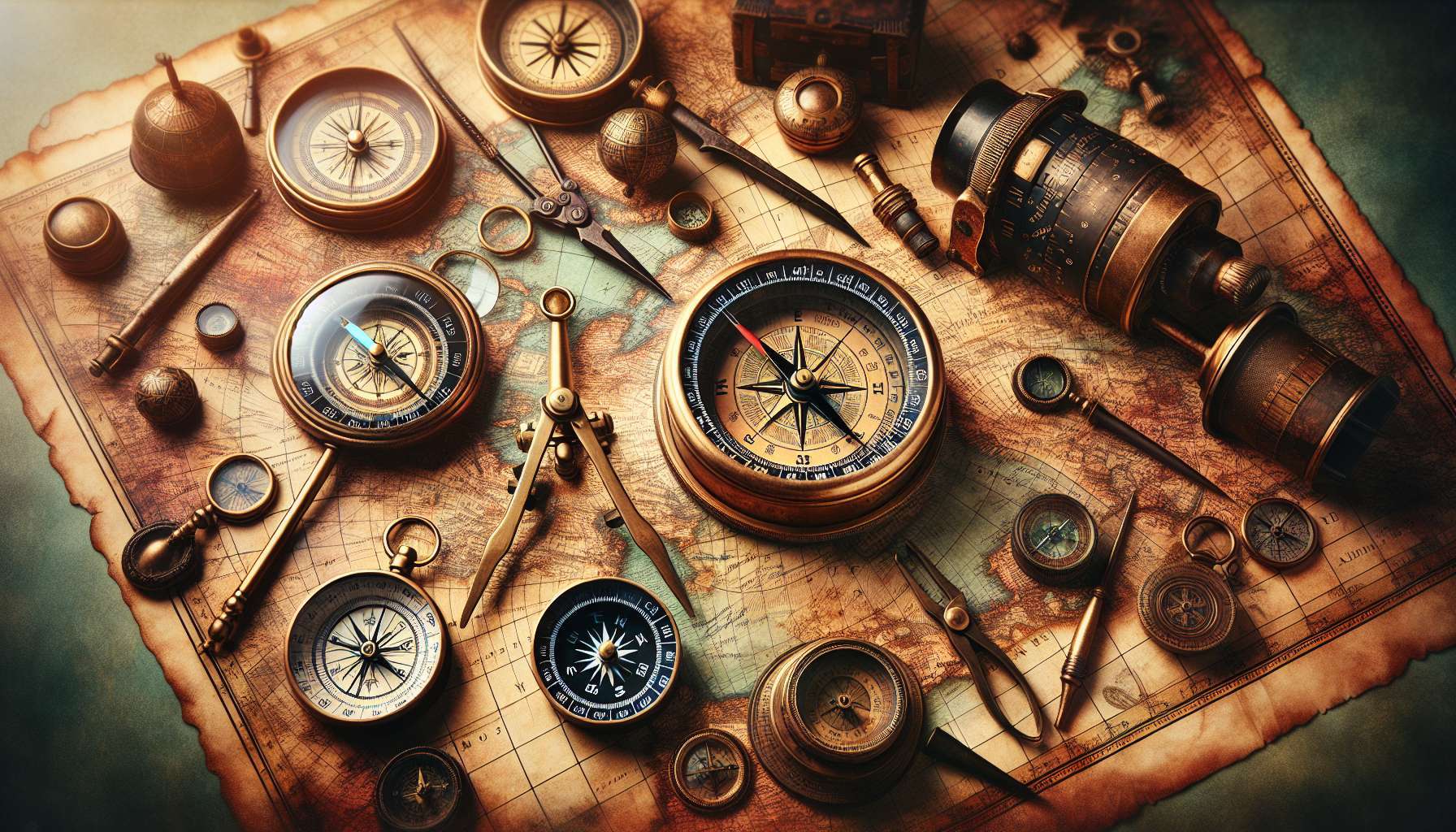Unlocking the Mysteries of Compasses: A Comprehensive Guide
Imagine yourself lost in the wilderness, with no signs or landmarks to guide your way. In such moments of uncertainty, a simple yet powerful tool comes to your rescue – the compass. This unassuming device has been a steadfast companion for explorers, navigators, and adventurers for centuries, providing a reliable method of finding direction in the vast unknown.
But what exactly is a compass, and how does it work? Join us on a journey of discovery as we delve deep into the fascinating world of compasses, uncovering their history, significance, and modern applications. From ancient origins to cutting-edge technologies, let’s explore the intricate workings of this timeless instrument and its enduring relevance in today’s fast-paced world.
The Origins of Compasses
The history of the compass dates back to ancient times, with early civilizations using lodestones – naturally magnetized rocks – for navigation. The Chinese were among the first to harness the power of magnetism for directional purposes, creating the first compasses around 200 BC. These early compasses consisted of a lodestone floating in a bowl of water, aligning itself with the Earth’s magnetic field to indicate the cardinal directions.
As trade and exploration flourished, compasses became indispensable tools for sailors and travelers, guiding them across vast oceans and uncharted territories. The introduction of the magnetic needle compass in the 11th century revolutionized navigation, allowing for more precise and reliable orientation at sea. This breakthrough paved the way for the Age of Discovery, enabling explorers like Christopher Columbus and Ferdinand Magellan to traverse the globe with unprecedented accuracy.
The Science Behind Compasses
At the heart of every compass lies the principle of magnetism. The Earth itself acts as a giant magnet, with its magnetic field extending from the North Pole to the South Pole. A compass needle, typically made of a ferromagnetic material like steel, aligns itself with this magnetic field, pointing towards the magnetic North Pole.
It’s important to note that the magnetic North Pole is not the same as the geographic North Pole, which marks the Earth’s axis of rotation. The angle between these two points, known as declination, varies depending on your location on the Earth’s surface. Navigational charts and compass adjustments take this into account to ensure accurate readings and course corrections.
In addition to traditional magnetic compasses, modern digital compasses use electronic sensors like magnetometers to detect magnetic fields and determine direction. These devices offer enhanced precision and convenience, making them popular choices for hikers, geologists, and smartphone users seeking reliable orientation in the great outdoors.
The Role of Compasses in Modern Society
While GPS technology has largely supplanted traditional compasses in everyday navigation, these timeless instruments continue to play a vital role in various fields. Military forces rely on compasses for tactical operations and land navigation, ensuring troops maintain situational awareness in challenging environments.
Outdoor enthusiasts and survivalists also swear by compasses as essential tools for wilderness navigation and emergency preparedness. Whether trekking through rugged terrain or facing unexpected obstacles, a reliable compass can mean the difference between getting lost and finding your way home safely.
Moreover, compasses have symbolic significance beyond their practical utility, representing guidance, orientation, and the quest for knowledge. Metaphorically, they serve as beacons of hope and direction in times of confusion and uncertainty, inspiring us to chart our course and follow our true north.
The Evolution of Compass Technology
As technology advances, so too do compasses evolve to meet the demands of a rapidly changing world. From precision engineering to digital innovation, modern compasses boast a range of features and capabilities designed to enhance accuracy and usability.
Gyrocompasses, for example, use gyroscopic principles to maintain orientation without reliance on the Earth’s magnetic field, making them ideal for ships, aircraft, and spacecraft. These sophisticated instruments offer stable and reliable navigation in challenging conditions, such as polar regions or areas with magnetic anomalies.
Smart compass apps have also gained popularity among tech-savvy users, providing interactive maps, augmented reality overlays, and real-time location tracking on smartphones and tablets. These versatile tools combine the convenience of GPS with the precision of a compass, offering a seamless navigation experience for urban explorers and outdoor adventurers alike.
Expert Opinions on Compasses
We reached out to renowned navigational experts and outdoor enthusiasts for their insights on the enduring appeal of compasses in today’s digital age. Captain Jack Sparrow, a seasoned sailor and navigator, shared his thoughts on the timeless charm of traditional compasses:
“A compass may not lead you to your heart’s desire, but it will always point you in the right direction. In a world of shifting tides and changing winds, the compass remains a steadfast companion for those who dare to explore beyond the horizon.”
Professor Amelia Earhart, a renowned aviator and adventurer, highlighted the importance of compasses in aviation and exploration:
“Navigating the skies requires a keen sense of direction and a reliable compass to guide your way. From solo flights across the Atlantic to daring expeditions over the Arctic, a compass is a pilot’s most trusted ally in the vast expanse of the heavens.”
Common Misconceptions About Compasses
Despite their longstanding reputation as reliable navigational tools, compasses are not immune to misconceptions and myths. Let’s debunk some common misconceptions about compasses and set the record straight:
- Compasses always point North: While compass needles align with the Earth’s magnetic field, they actually point towards magnetic North, which may deviate from true North due to declination. Understanding this difference is crucial for accurate navigation.
- Compasses are obsolete in the age of GPS: While GPS technology offers unparalleled accuracy and convenience, compasses remain indispensable for backup navigation, especially in remote areas or during emergencies when electronic devices fail.
- Compasses work anywhere on Earth: Compass readings can be affected by local magnetic anomalies, metal objects, or electronic interference, leading to errors in direction. Calibrating your compass and accounting for environmental factors are essential for reliable results.
FAQs About Compasses
Here are some frequently asked questions about compasses to help you better understand these essential navigational tools:
- How do compasses work? Compasses use magnetism to align with the Earth’s magnetic field, indicating the cardinal directions of North, South, East, and West.
- What is declination? Declination is the angle between magnetic North and true North, which varies based on your location on the Earth’s surface. It’s crucial to account for declination when using a compass for navigation.
- Can I use a compass without a map? While a map enhances the effectiveness of a compass for navigation, you can still determine your direction and orientation using a compass alone in the absence of a map.
To Wrap Things Up
In conclusion, compasses remain timeless symbols of exploration, discovery, and navigation, embodying the spirit of adventure and the quest for knowledge. Whether guiding sailors across stormy seas, aiding hikers in mountainous terrain, or inspiring dreamers to follow their true north, compasses continue to play a vital role in our lives.
As we navigate the tumultuous seas of change and uncertainty, let us embrace the lessons of the compass – to stay true to our course, trust our inner guidance, and never lose sight of the destination on the horizon. In a world of constant motion and shifting landscapes, the compass serves as a steadfast companion, pointing us towards new horizons and endless possibilities.







